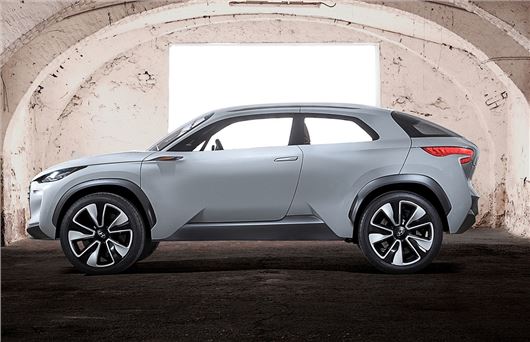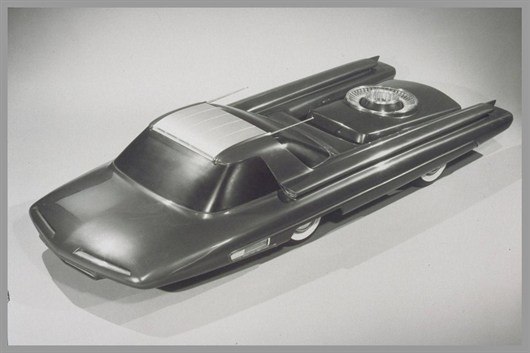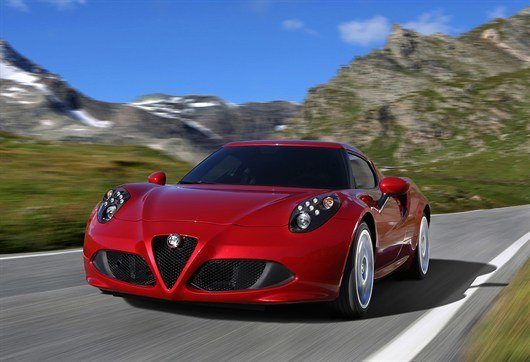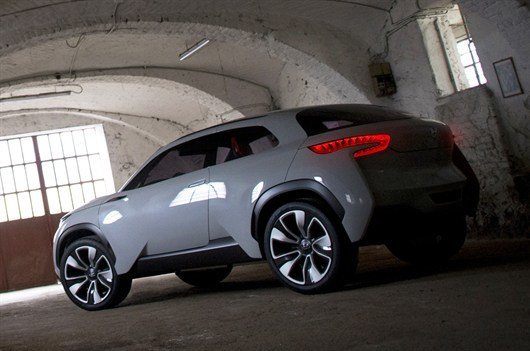Comment: Hyundai's show car has a potentially revolutionary chassis

Motor shows are always a hotbed for craziness heralded as the next big thing - but often it never amounts to much at all. Back in the 1950s Ford showed the world the Nucleon and proclaimed that we'd all be driving around with nuclear fusion engines under our 'hoods.' I don't know about you, but I still use petrol.
However the Hyundai Intrado concept could be different. It has been designed not just to showcase the new styling direction of the brand but also a lightweight, potentially revolutionary new carbon-fibre chassis design. Of course, it all hinges on how easily and cost effectively Hyundai can scale up production for mainstream cars.
Building a chassis from carbon-fibre isn’t a new thing, but it’s typically too expensive to use in mass-produced cars, despite the advantages of lightweight and immense strength. If you look at some of the vehicles that use carbon-fibre chassis at the moment you'll come up with some exotic machines.

This is not the future.
The McLaren P1, for example, uses a carbon-fibre monocoque chassis. A monocoque chassis design essentially uses the exterior structures of the car to bear loads. It's constructed using sheets of carbon-fibre laid on top of one another over and over, before being baked and set at a specific temperature.
It's not a cheap way of doing things, so other manufacturers tend to use carbon-fibre more sparingly. The Alfa Romeo 4C, for example, uses a carbon-fibre tub - the lower part of the chassis, including the floor, is made from carbon-fibre, but other major components aren't.
The way the material is employed in the Intrado, however, is rather different – and it could be cost effective enough for mass production if Hyundai puts enough investment into scaling up the processes involved. The system employs flexible ropes of carbon fibre, which can be twisted and shaped very easily in a simple mould, without the need for layer after layer of carbon-fibre.
The ropes can also be packed together to make thicker sections. These are criss-crossed with more carbon-fibre to form a stiff ‘beam’ with a semi-hollow core – a bit like bone. It means a car's chassis can be easily and quickly constructed out of a very strong material, but without using it in excess. It also doesn't need to be baked like tradition carbon fibre - it's instead set in resin.

Cars with carbon-fibre chassis tend to be expensive and exotic.
Most carbon fibre chassis structures use a lot of material and are both expensive and time consuming to construct, but the new Hyundai system should be both quick and inexpensive. That means the weight and strength advantages can be employed on more affordable cars - possibly even regular family cars like the next generation of i30.
Svenn Wittke, Senior Studio Engineer at Hyundai, said the new system could make a car’s chassis as much as 70% lighter. A lot of a cars weight is in its chassis construction, so the new design would significantly reduce the overall weight of a car. Engines don’t have to work as hard to move lighter cars, which means significant improvements in fuel economy, plus better handling and better performance from less powerful, more efficient engines.
The current incarnation of the new chassis has been designed specifically for the Intrado concept, which has a hydrogen fuel cell powertrain, but there’s no reason it can’t be adapted to other types of car in future, including everyday petrol or diesel models. It would also make an ideal basis for a future performance model like the next generation Veloster.
Another advantage of the carbon-fibre chassis is that it is strong enough to transfer forces without buckling as much as steel, so the extra rigidity of a B-pillar (the post between the front and back doors) is not required. This maximises easy access to the cabin. It’s not just a flight of fantasy either – the chassis in the show car even has a separate front crash structure like a production car chassis does.
The new chassis design will make its debut in the Hyundai Intrado crossover concept at the 2014 Geneva Motor Show – click here to read more about the Intrado.

It might be bold, but it's what's under the skin that matters.

 John Slavin
John Slavin
 Jaguar causes a stir with new brand identity
Jaguar causes a stir with new brand identity
 Private e-scooters to be made legal on UK roads
Private e-scooters to be made legal on UK roads
 XPeng launches in the UK
XPeng launches in the UK
 Car insurance premiums fall again
Car insurance premiums fall again
 New Renault Master E-Tech 100% electric now available to order
New Renault Master E-Tech 100% electric now available to order
 Collision risk around airports is double the national average
Collision risk around airports is double the national average
 Question of the week: Can an MHEV travel on electric power?
Question of the week: Can an MHEV travel on electric power?

.jpg)






Add a comment